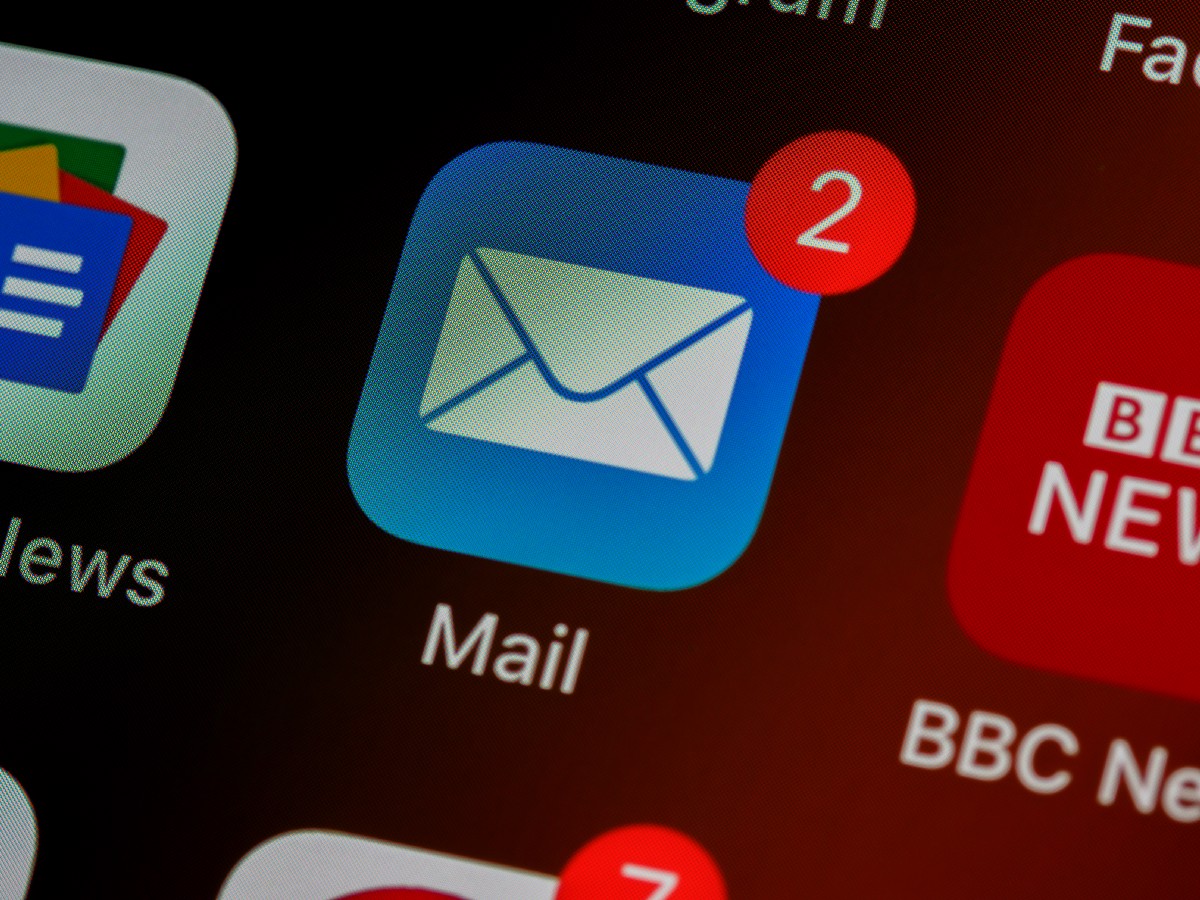Industry News
Like any good marketer, you want to monitor the performance of your email campaigns. After all, if no one reads your emails, you’re pretty much wasting your time, sending emails to vanish in the confines of your customers’ inboxes.
In prior years, the email open rate was considered to be the prime factor to review. If your company’s name and subject line inspired your client to read your email, they must be at least moderately interested in what you have to offer.
Unfortunately, times have changed. While email open rates are helpful, they don’t tell the whole story behind your email marketing campaign’s success (or failure). New changes to Google’s Gmail and Apple Mail mean that email open rates are often flawed. This article will discuss the changes both companies have made and what they mean to your business.
What Has Changed with Google’s Gmail?
Google has long been a proponent of user security and organization for its Gmail account holders. The company employs a variety of features that prove helpful for its users, including automatic spam classification and organization of direct messages, promotional materials, and social communications.
The company seeks to ensure that any messages flagged as security risks are clearly identified. If the message is determined to be spam, the system kicks it into a separate folder, where it is only accessible if the customer decides to review it.
Other features of Gmail include the ability to create additional folders, label messages, and schedule outgoing communications. Gmail users can also star emails or save them for later if they’re too pressed for time to deal with them when they read them.
As times have changed and email has become subjected to various hacks and other unfortunate events, Gmail has stepped in to mediate issues. One measure that Google has implemented is known as Google prefetching. Most marketers and IT professionals regard Google’s prefetch activities as being intended to prevent unwanted viruses and enhance the user experience.
However, Google prefetching leads to skewed results for marketers attempting to monitor their email promotional campaigns. Various industry professionals have found that Google prefetching can inflate a company’s email open rates by 2% or more. Thus, if you’re relying on email open rates to evaluate customer engagement, the open rate may be presented as up to 2% higher in your results than in reality.
What Is Google Prefetching?
Google prefetching occurs when a user remains logged into their Gmail account through a smartphone or computer. The Gmail system automatically scans and downloads the images and text within an email, usually within seconds of delivery. Most experts believe the prefetching serves as a security measure and allows faster viewing of the message’s contents, should the user choose to open and view the email.
Google prefetching is different from the Google Image Cache, which is a bot that allows the user to view an email and its pictures after opening it.
Characteristics of an email subject to Google prefetch include:
- A referrer that begins with http://mail.google.com — not the more secure https://mail.google.com
- An IP location that is reflective of Google’s servers, not the user’s actual IP address
- A user-agent string that is consistent with a Google prefetch bot
- An open request that occurs immediately after the email is initially sent — usually within just a few seconds of delivery
- An open request that appears before the actual delivery of the email
Prefetching continues to occur after the email’s delivery, even if the user closes a mobile app.
Industry experts have identified a specific user-agent string typically associated with Google prefetching. The string is provided below:
Mozilla/5.0 (Windows NT 10.0; Win64; x64) AppleWebKit/537.36 (KHTML, like Gecko) Chrome/42.0.2311.135 Safari/537.36 Edge/12.246 Mozilla/5.0
Any email opens with the above user-agent prefetch string should not be included when evaluating email open rates.
What Has Changed with Apple Mail Privacy Protection?
Apple implemented Mail Privacy Protection late in 2021. The system protects users from giving away certain information, like their IP address, when they open their email. IP addresses provide companies with details about the user’s location and mobile provider.
While it doesn’t give personal information, like names or street addresses, some people prefer not to provide their IP address when opening an email or searching the internet.
Apple Mail Privacy Protection allows users to opt into the service; it is not automatically provided. Users must be operating iOS15 or macOS 12 Monterey to elect Mail Privacy Protection. After downloading the software, subscribers can choose to enable Apple Mail Privacy Protection by responding to a prompt to do so.
It’s important to note that Apple Mail Privacy Protection is only available for users who connect their email platform with Apple email. Thus, if the subscriber chooses to use the Gmail or Outlook app to review their incoming email, they won’t receive the benefits offered by Apple Mail Privacy Protection. They must have configured their accounts to work directly with Apple Mail and use the Apple Mail app to review and respond to all emails.
Apple Mail Privacy Protection is considered to be stronger than Google prefetch. Any marketers whose customers use Apple Mail Privacy Protection have no way of knowing how their clients interact with their emails. Email open rates will be tough to decipher.
However, marketers can take heart in knowing that the majority of email users fail to take the steps necessary to configure their regular email platform with Apple Mail. They’re content with their standard email apps, and moving them to Apple Mail isn’t a priority.
Even though only a small percentage of people have decided to integrate their email platform with Apple Mail, compliance may tick upward in the following months. As people realize the benefits of protecting their IP addresses, more may choose to do so.
How Does Apple Mail Privacy Protection Impact Email Marketers?
The jury is still out on how Apple Mail Privacy Protection will impact email marketers. A recent survey conducted on marketers asked how the implementation of the new standard affected them. Only 29% of marketers indicated that the standard had a negative impact. Most respondees indicated that Apple Mail Privacy Protection did not affect the efficiency of their marketing campaigns.
However, as customers become more familiar with the available option, they may choose to connect their email platforms with Apple Mail. If they do so, more significant repercussions may be felt by marketers and the companies they work for.
Should I Still Use Email Open Rate to Validate the Performance of My Marketing Campaigns?
With the advent of Google prefetching and Apple Mail Privacy Protection, marketers are right to wonder whether email open rate is still a relevant metric. After all, if the results are variable, how can they know that customers are genuinely viewing their emails? Could Google prefetch and Apple Mail Privacy Protection prevent marketers from collecting accurate promotional campaign results?
It’s essential to consider how many subscribers use Gmail or Apple Mail to determine how much your email open rate results are affected. Gmail is the most popular email platform in the world, so the chances are that your subscriber base includes many Gmail users. If you want to dive down into the details, examine the results of your latest email promotional campaign and see how many results appeared anonymized or with the below user string:
Mozilla/5.0 (Windows NT 10.0; Win64; x64) AppleWebKit/537.36 (KHTML, like Gecko) Chrome/42.0.2311.135 Safari/537.36 Edge/12.246 Mozilla/5.0
Suppose that a significant proportion of your data show anonymous IP addresses or the Google prefetch user string. In that case, marketers should disregard metrics associated with email open rates in favor of other measurements. While you can still measure email open rate, use the results in tandem with other metrics.

What Other Metrics Are Helpful for Measuring the Effectiveness of an Email Campaign?
Two other metrics help monitor when your customers are truly paying attention to your email communications. They include read rates and actual website clicks.
Open rate and read rate differ based on the amount of time a customer has an email opened. Any email opened for seven seconds or less qualifies as opened when calculating the open rate. Thus, if your customer takes the time to open your email and then closes it within seven seconds, it’s considered open.
Seven seconds isn’t much time; your client could have simply skimmed the email, mistaken it for another communication, or opened it to keep their inbox clear of new notifications. There’s no telling what your client thought when they viewed the communication.
The read rate is different. An email qualifies as read when it is opened for more than eight seconds by an individual. Eight seconds signifies a bit more intent from your customer. They may have taken time to read through your promotional material before deciding on their next step.
Finally, clicks directly from your email to your website are the ultimate in measuring customer engagement. If a customer clicks on your website directly from an email, you know they were at least interested in the message, even if they didn’t make a purchase.
Website clicks help determine when a customer is genuinely keen on your brand. Few people will take time from their busy schedule to visit a website if they don’t have a moderate interest in your company and its products or services.
When comparing all three statistics, you’ll be in a better position to judge the effectiveness of your email promotional campaign. You can use all three measurements to decide when your efforts are working or when it’s time to adjust your strategy.
You can also consider adding something to your email that helps you judge whether your customers remain interested in your brand. For example, asking them to provide their input to a blog or participate in a survey may inspire them to think more about your email and its content.
Monitor Your Email Promotions with Contact Consumers
Contact Consumers offers marketers and business owners the opportunity to gain significant insights into their email campaigns with our robust analytics. Check out our solutions today to find out more about Contact Consumers and our email and SMS platforms.




